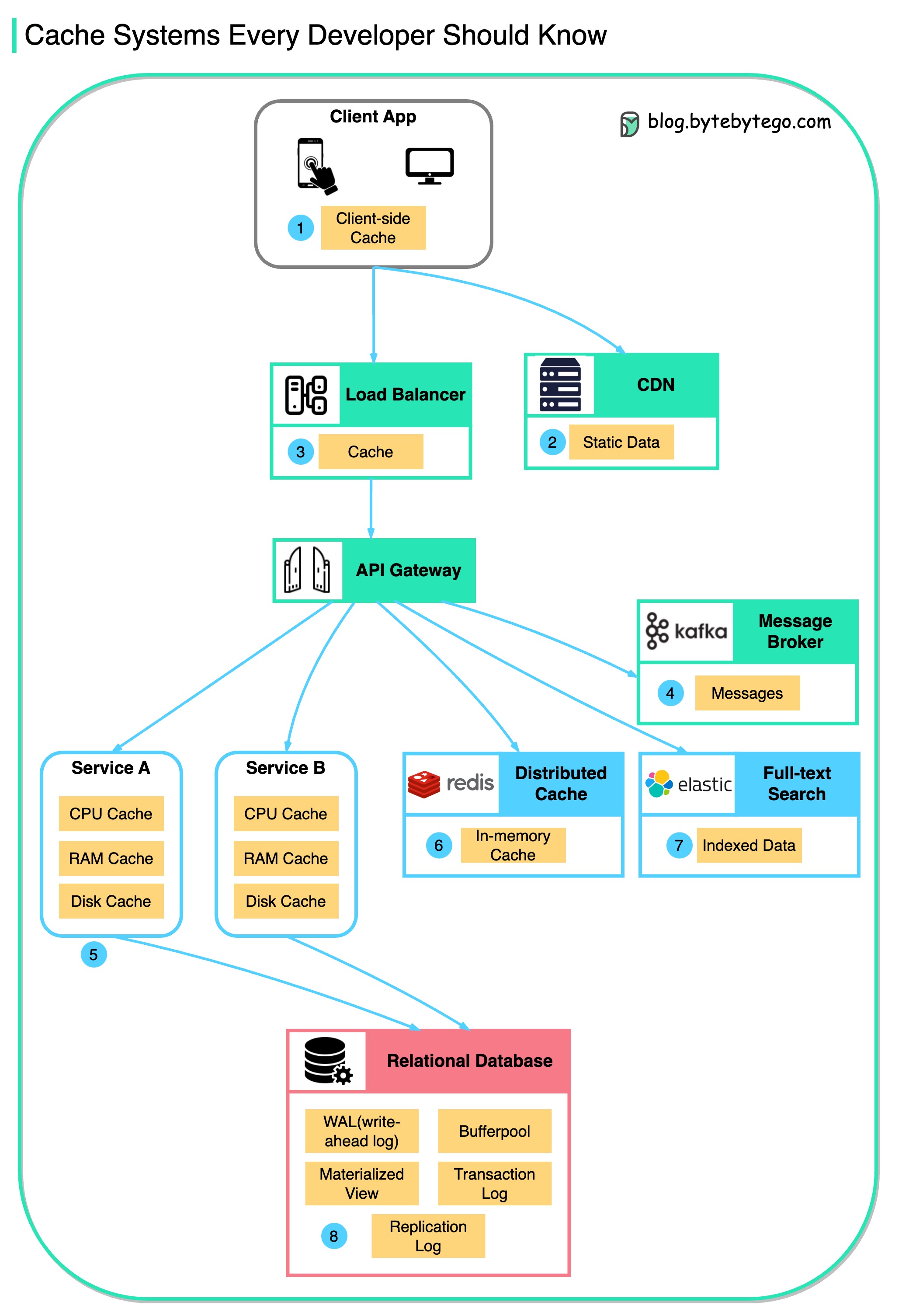Explore essential caching layers for developers to optimize performance.

Data is cached everywhere, from the client-facing side to backend systems. Let’s look at the many caching layers:
Client Apps: Browsers cache HTTP responses. Server responses include caching directives in headers. Upon subsequent requests, browsers may serve cached data if still fresh.
Content Delivery Networks: CDNs cache static content like images, stylesheets, and JavaScript files. They serve cached content from locations closer to users, reducing latency and load times.
Load Balancers: Some load balancers cache frequently requested data. This allows serving responses without engaging backend servers, reducing load and response times.
Message Brokers: Systems like Kafka can cache messages on disk per a retention policy. Consumers then pull messages according to their own schedule.
Services: Individual services often employ caching to improve data retrieval speeds, first checking in-memory caches before querying databases. Services may also utilize disk caching for larger datasets.
Distributed Caches: Systems like Redis cache key-value pairs across services, providing faster read/write capabilities compared to traditional databases.
Full-text Search Engines: Platforms like Elasticsearch index data for efficient text search. This index is effectively a form of cache, optimized for quick text search retrieval.
Databases: There are specialized mechanisms to enhance performance, some of which include caching concepts:
Bufferpool: This is a cache within the database that holds copies of data pages. It allows for quick reads and writes to temporary storage in memory, reducing the need to access data from disk.
Materialized Views: They are similar to caches in that they store the results of computationally expensive queries. The database can return these precomputed results quickly, rather than recalculating them.